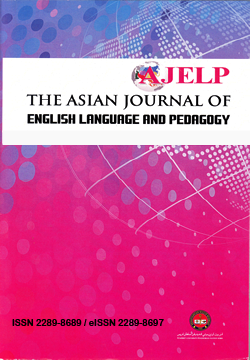Exploration of the Complex Relationship between Women and their Environment in George Gissing's The Whirlpool
DOI:
https://doi.org/10.37134/ajelp.vol10.1.6.2022Keywords:
Ecofeminist analysis, patriarchy, oppression, domination, women-nature relationsAbstract
This article examines the relationship between women and their environment in George Gissing's novel The Whirlpool at the height of 19th century patriarchy in London industrial society. Since George Gissing's novels are very realistic in describing and accurately describing scenes and characters, they can be a good reflection of the society of their time. The analysis of the relationship between women and nature in this article is based on the theories of Karen Warren, the great theorist of ecofeminist theory, in which she expresses the types of relationship between women and the environment and examines the oppression and dominations against them by the patriarchal system. In addition to this analysis, what was studied in this article is an examination of the solutions and strategies that women take to save themselves from the clutches of patriarchy in the industrial society of the 19th century. The result of this research was that women and the environment in Gissing’s novels are not only deeply and inextricably linked, but both are somehow suppressed and dominated by the patriarchal system. Gissing critically addresses this oppression in his novel and questions it. He also shows that the main burden of saving nature from this oppression and domination that is the result of the industrialization of society at that time is on women.
Downloads
References
Bader, A. L. (1963). New Looks at Gissing [Review of George Gissing, a Critical Biography; The Letters of George Gissing to Eduard Bertz, 1887-1903; George Gissing and H. G. Wells, Their Friendship and Correspondence, by J. Korg, A. C. Young, G. Gissing, Eduard Bertz, & R. A. Gettmann]. The Antioch Review, 23(3), 392–400.
Bianchi, B. (2012). Ecofeminist Thought and Practice. Degrowth Conference Venice. https://degrowth.info/library/ecofeminist-thought-and-practice
Clark, A. (2013). Working Life of Women in the Seventeenth Century. Routledge.
Coustillas, P. (1972). George Gissing : The Critical Heritage. Routledge
Cuomo, C. (2002). On the Ecofeminist Philosophy. Ethics and Enviriment, Indiana University Press, 7(2), 1-11.
Dennis, R. (2009). The Place of Bloomsbury in The Novels of George Gissing, Opticon1826, 7(4). https://www.ucl.ac.uk/opticon1826/archive/issue7/Articles/Article_Dennis_Gissing
Garwood, J. (2009). The Million- Peopled City. Dodo Press.
Gissing, G. (1897). The Whirlpool. The Floating Press.
Glazebrook, T. (2002). Karen Warren’s Ecofeminism. Ethics and the Environment, 7(2), 12–26.
Greenslade, W. (1989). Women and the Disease of Civilization: George Gissing’s “The Whirlpool.” Victorian Studies, 32(4), 507–523.
Hurvitz, R. (2015). The Ecology of Feminism and the Feminism of Ecology, in Healing the Wounds: The Promise of Ecofeminism, New Society Publishers.
Korg, J. (1963) George Gissing: A Critical Biography . University of Washington Press.
Mawle, A. (2010). Climate Change, Human Health, and Unsustainable Development. Journal of Public Health Policy. 31, 272-277.
Parkin, J. (1993). Victorian Women. John Murray.
Plant, J. (1989). Healing the Wounds: The Promise of Ecofeminism. Philadelphia, PA: New Society Publishers.
Poole, A. (1975). Gissing in Context . London and Basingstoke: The MacMillan Press.
Shiva, V. (2004). Empowering Women. BBC World Trust .1-3.
Warren, K. J. (1987). Feminism and Ecology Making Connections. Environmental Ethics. 9 (1), 3-20.
Warren, K. J. (1990). The Power and the Promise of Ecological Feminism. Environmental Ethics. 12 (2), 125-46.
Warren, K. J. (1996). Ecological; Feminist Philisophies. Indiana University Press.
Warren, K. J. (1997). Ecofeminism: Women, Culture, Nature. Indiana University Press.
Warren, K. J. (2000). Ecofeminist Philosophy: A Western Perspective on What it is and Why it Matters. Rowman & Littlefield Publishers.





